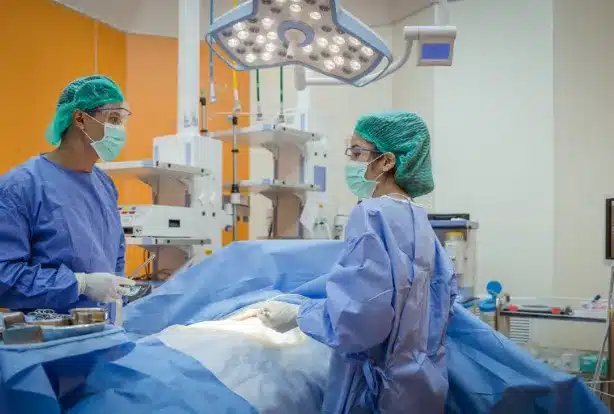Abdominoplasty, while sought after for its transformative effects on abdominal contouring, carries inherent risks that necessitate thorough consideration. Understanding the potential complications and adverse events associated with abdominoplasty is paramount for individuals contemplating this surgical procedure, ensuring informed decision-making and proactive risk management strategies. By delving into these risks, patients and surgeons alike can collaborate effectively to optimize safety and enhance postoperative outcomes.
What are the risks of abdominoplasty
Abdominoplasty, commonly known as a tummy tuck, is a surgical procedure to remove excess skin and fat from the abdomen while tightening the underlying muscles. It is famous for individuals seeking a flatter, more toned midsection. However, like any surgical procedure, abdominoplasty carries risks and potential complications.
Abdominoplasty, commonly known as a tummy tuck, is a transformative cosmetic surgery aimed at enhancing abdominal contouring. This procedure targets excess skin and fat, tightening abdominal muscles to achieve a flatter, more toned appearance. With its focus on aesthetic refinement, abdominoplasty remains a popular choice for those seeking to sculpt their midsection.
This article will delve into the various Risks of Abdominoplasty, shedding light on the importance of informed decision-making and thorough consultation with a qualified plastic surgeon.
General Anesthesia
One of the initial risks of abdominoplasty is general anesthesia. Although anesthesia is generally safe, there are inherent risks associated with its administration, including allergic reactions, respiratory problems, and medication side effects. Thorough pre-operative assessments and the expertise of an experienced anesthesiologist usually minimize these risks.
Clinic contact number: +989371200167
Bleeding and Hematoma Formation
During abdominoplasty, incisions are made in the abdominal area, and tissues are manipulated and repositioned. As with any surgical procedure, there is a risk of bleeding. In some cases, bleeding can lead to the formation of a hematoma, which is a collection of blood that may require drainage. Proper surgical technique and post-operative monitoring help minimize these risks.
Infectio
Any surgical procedure carries the risk of infection. Following an abdominoplasty, patients receive post-operative care instructions to minimize the chances of infection. However, in rare cases, infection may still occur. Prompt identification and treatment of infections are crucial to prevent complications and ensure a successful recovery.
Poor Wound Healing
Wound healing is an essential part of the recovery process. However, certain factors can hinder or delay proper healing after abdominoplasty. These factors may include smoking, diabetes, obesity, and poor circulation. In such cases, wound healing complications, such as wound separation or tissue necrosis, can occur. Adhering to pre-operative instructions and following post-operative care guidelines can help reduce these risks.
Scarring
Abdominoplasty involves incisions, resulting in scars. While plastic surgeons strive to minimize scarring and ensure optimal wound closure, individual healing, and genetic factors play a significant role in scar formation. Some patients may develop hypertrophic or keloid scars, which are raised and may be more noticeable. Discussing scar management options with the surgeon can help address concerns and optimize scar appearance.
Seroma
Seroma is fluid accumulation beneath the skin, forming a pocket or a lump. It is a common complication after abdominoplasty. Surgeons may place drains during the procedure to minimize the risk of seroma. However, in some cases, fluid accumulation may still occur. Seromas typically resolve independently, but significant or persistent seromas may require aspiration or additional treatment.
Numbness and Sensation Changes
Following abdominoplasty, patients may experience temporary or permanent changes in sensation in the abdominal area. Numbness, tingling, or altered sensation may occur due to nerve damage during the surgery. In most cases, sensation gradually returns over time, but it may be permanent for some individuals.
Among aesthetic surgery procedures, abdominoplasty is associated with a higher complication rate, but previous studies are limited by small sample sizes or single-institution experience.Pub Med

Clinic contact number: +989371200167
What causes the risks of abdominoplasty?
The risks of abdominoplasty can be attributed to several factors, including the nature of the surgical procedure, individual patient characteristics, and potential complications during the healing process. Here are some of the primary causes of the risks associated with abdominoplasty:
1. Surgical Procedure:
Abdominoplasty is an invasive surgical procedure involving incisions in the abdominal area, removing excess skin and fat, and tightening the underlying muscles. The very nature of surgery carries inherent risks, including bleeding, infection, and complications related to anesthesia.
2. Anesthesia:
The administration of general anesthesia during abdominoplasty carries its risks. Anesthesia medications can cause allergic reactions, respiratory problems, and medication side effects. These risks are usually mitigated through pre-operative assessments and the expertise of an experienced anesthesiologist.
3. Surgical Technique:
The skill and experience of the plastic surgeon performing the abdominoplasty play a significant role in minimizing risks. A surgeon’s technique, precision, and attention to detail can help reduce the chances of complications such as excessive bleeding, tissue damage, or poor wound healing.
4. Patient Factors:
Certain individual patient factors can increase the risks associated with abdominoplasty. These factors include:
a. Smoking: Smoking impairs blood circulation and can hinder the healing process, leading to an increased risk of complications such as poor wound healing, infection, and tissue necrosis.
b. Obesity: Being significantly overweight can increase the risk of complications during surgery and affect the healing process. Obesity can strain the cardiovascular system, impair wound healing, and increase the likelihood of infection.
c. Pre-existing Medical Conditions: Conditions such as diabetes, hypertension, and autoimmune disorders can increase the risks associated with abdominoplasty. These conditions may affect wound healing, increase the likelihood of infection, and impact overall surgical outcomes.
5. Post-Operative Care:
Adherence to post-operative care instructions is crucial in minimizing the risks associated with abdominoplasty. Proper wound care, medication management, and follow-up appointments with the surgeon contribute to a smooth recovery and reduce the likelihood of complications.
6. Individual Healing Response:
Each individual’s healing response is unique, and factors such as genetics, age, and overall health can influence the outcome of the surgery. Some individuals may be predisposed to developing keloid or hypertrophic scars, while others may experience prolonged numbness or altered sensation in the abdominal area.

Navigating the Risks of Abdominoplasty
While abdominoplasty can provide transformative results, it is essential to recognize and discuss the potential risks with a qualified plastic surgeon. A thorough consultation, an understanding of individual risk factors, and realistic expectations can help mitigate these risks and increase the likelihood of a successful procedure and recovery.
When considering abdominoplasty surgery, it’s imperative to be aware of the associated risks to make informed decisions about one’s health. Renowned institutions like the Harvard Medical School and the University of California, Los Angeles (UCLA) Medical Center have conducted extensive research into the complications of abdominoplasty, shedding light on the prevalence and severity of adverse events. Additionally, prominent figures in the field of plastic surgery, such as Dr. Sherrell Aston from the New York University Langone Health, have contributed valuable insights into risk management strategies and patient safety protocols.
In the realm of healthcare, hospitals like the Mayo Clinic and companies like Allergan play pivotal roles in advancing patient care and safety in abdominoplasty procedures. Through their collaborative efforts, they continuously strive to improve surgical techniques and develop innovative solutions to mitigate risks associated with abdominoplasty. Recent statistics from the American Society of Plastic Surgeons (ASPS) indicate a slight increase in the overall complication rates of abdominoplasty procedures in recent years, emphasizing the importance of thorough preoperative assessments and meticulous surgical planning to minimize adverse outcomes.

Which age get abdominoplasty without risk?
An ideal candidate for abdominoplasty, also known as a tummy tuck, typically meets the following criteria:
- Good Physical Health: The candidate should be in good overall physical health and free from any medical conditions that could increase the risk of surgery or impede the healing process.
- Stable Weight: Candidates should be at a stable weight, close to their ideal body weight, with realistic expectations about the outcome of the procedure. Abdominoplasty is not a weight loss surgery but rather a body contouring procedure to address excess skin and fat in the abdominal area.
- Excess Skin and Fat: The candidate should have excess skin and fat in the abdominal region, often resulting from factors such as pregnancy, significant weight loss, or aging. Abdominoplasty can help tighten the abdominal muscles and remove excess skin to achieve a smoother, more toned appearance.
- Non-Smoker: Smoking can increase the risk of complications during and after surgery, including delayed healing and wound complications. Ideal candidates for abdominoplasty should be non-smokers or willing to quit smoking for a period before and after the procedure.
- Realistic Expectations: Candidates should have realistic expectations about the results of abdominoplasty and understand that it is not a substitute for a healthy lifestyle or weight loss. While abdominoplasty can improve the appearance of the abdomen, it may not achieve perfection or eliminate all imperfections.
- Commitment to Recovery: Candidates should be willing to commit to the recovery process, which may involve temporary restrictions on physical activities, wearing compression garments, and following post-operative instructions provided by their surgeon.
Clinic contact number: +989371200167
Summary
In conclusion, while abdominoplasty offers significant aesthetic benefits, it is essential to acknowledge and address the associated risks and potential complications. From the risk of infection and bleeding to the possibility of adverse events such as seroma formation or skin necrosis, understanding these risks is critical for both patients and surgeons. Moreover, effective pain management strategies and a focus on patient safety are paramount throughout the surgical journey.
Surgeons’ expertise plays a crucial role in minimizing risks, ensuring meticulous surgical techniques, and implementing comprehensive postoperative care plans to mitigate complications and optimize outcomes. By prioritizing patient safety, vigilant risk management, and ongoing advancements in surgical expertise, abdominoplasty procedures can be performed with greater confidence and efficacy, ultimately leading to enhanced patient satisfaction and well-being.
FAQs
What are the general risks of abdominoplasty?
The general risks of abdominoplasty include bleeding, infection, poor wound healing, scarring, seroma (fluid accumulation), changes in sensation, and anesthesia-related risks.
How can bleeding be minimized during an abdominoplasty?
Surgeons use meticulous surgical techniques and may place drains to minimize bleeding.
Is abdominoplasty surgery painful?
Pain and discomfort are common after abdominoplasty, but these can be managed with prescribed pain medications and proper post-operative care. Most patients find that pain decreases significantly within the first week after surgery.
How long does it take to recover from abdominoplasty surgery?
Recovery times vary depending on individual factors and the extent of the procedure. Most patients can resume light activities within a few weeks, but it may take several months for full recovery and final results to become apparent.
Will there be visible scarring after abdominoplasty?
Yes, abdominoplasty results in surgical scars, typically located along the lower abdomen. However, skilled surgeons aim to minimize scarring and provide instructions for scar management to optimize healing and minimize their visibility over time.
Abdominoplasty: Risk Factors, Complication Rates, and Safety of Combined Procedures – PubMed (nih.gov)



